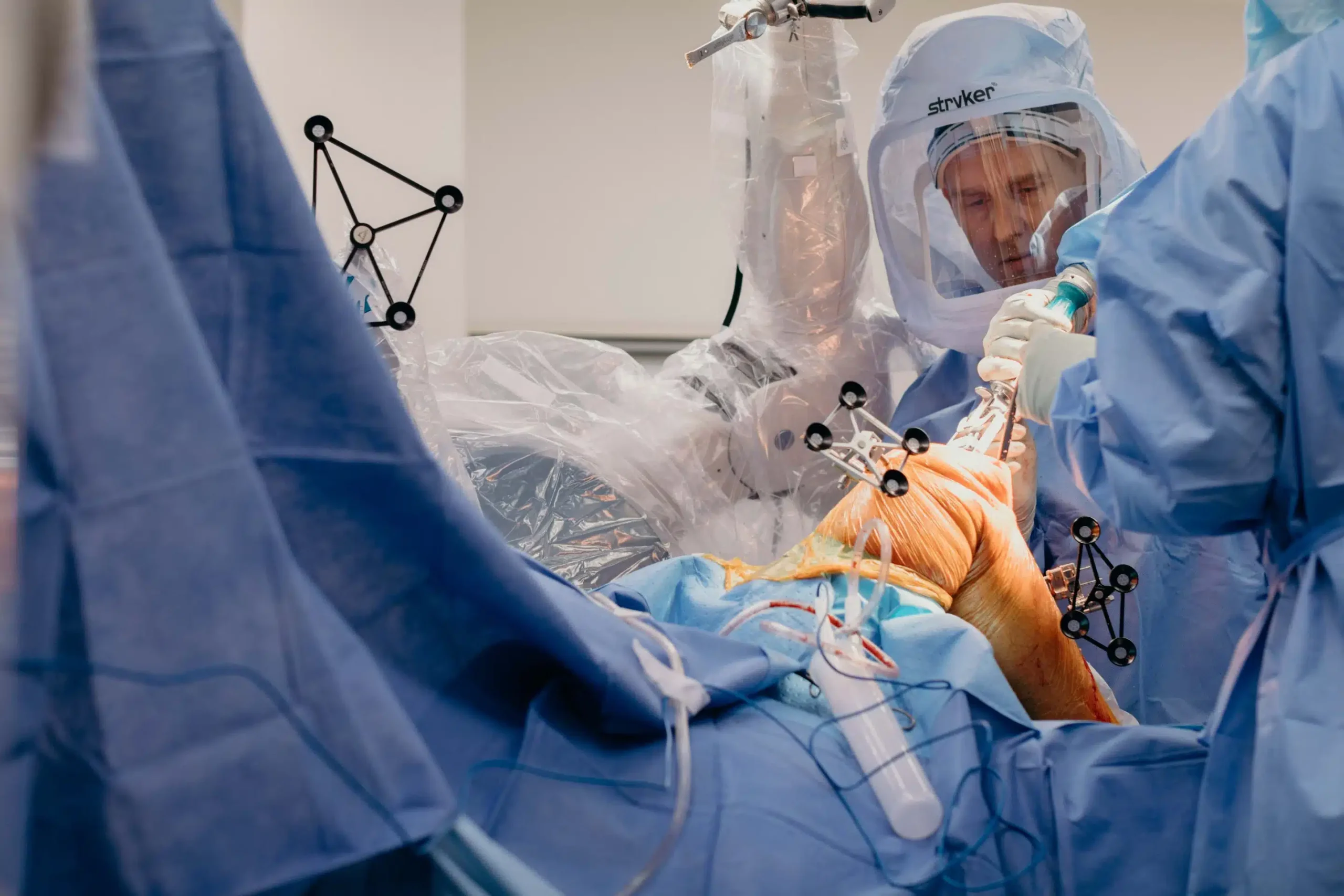
Recovering from surgery demands more than resting in bed and waiting for healing to occur naturally.
Many patients unknowingly sabotage recovery by skipping small steps crucial for optimal tissue repair.
Mistakes often arise from eagerness to resume normal life, misunderstanding discharge instructions, or ignoring early warning signs.
Surgeons emphasize post-operative care protocols because healing follows a delicate timeline that easily derails.
Pain control, mobility exercises, wound management, and gradual activity resumption require active patient participation.
Even minor deviations from advised care plans can escalate complications, prolong recovery, or endanger surgical success.
Understanding common pitfalls helps patients take smarter actions and support their body’s intricate healing processes effectively.
Recovering from surgery demands more than resting in bed and waiting for healing to occur naturally
While rest plays a critical role, immobility without guided movement risks complications like blood clots.
Muscle atrophy, joint stiffness, and pulmonary infections develop quickly when prolonged bed rest dominates recovery periods.
Modern rehabilitation strategies emphasize early, controlled mobilization to stimulate circulation and maintain muscle memory.
Physical therapists design personalized movement protocols balancing protection of surgical sites with essential bodily stimulation.
Patients adhering strictly to rest-only models often face slower recoveries compared to those following balanced rehabilitation.
Movement performed under supervision speeds up healing and restores function more effectively than passive inactivity.
Many patients unknowingly sabotage recovery by skipping small steps crucial for optimal tissue repair
Skipping prescribed medications, missing therapy sessions, or neglecting wound care seems minor initially.
However, these oversights create fertile ground for infections, scar tissue overgrowth, or chronic stiffness.
Anti-inflammatory medications, antibiotics, and painkillers prescribed after surgery maintain biological environments favorable for healing.
Physical therapy prevents joint adhesions, muscle weakening, and impaired range of motion from setting in permanently.
Wound inspections and proper dressing changes reduce infection risks while promoting organized tissue regeneration.
Every element in the recovery plan serves a purpose, even if benefits seem invisible day-to-day.
Mistakes often arise from eagerness to resume normal life misunderstanding discharge instructions or ignoring early warning signs
Patients feel naturally impatient to return to work, hobbies, and social lives after surgical interruptions.
Optimism sometimes morphs into premature resumption of intense activities against medical advice timelines.
Subtle misunderstandings during discharge consultations contribute to incorrect assumptions about exercise limits or lifting restrictions.
Discomfort tolerance varies widely; ignoring pain spikes, swelling, or fatigue leads to reinjury or surgical failure.
Promptly reporting unexpected symptoms prevents minor setbacks from snowballing into major complications requiring additional interventions.
Strict communication with healthcare providers anchors safe progression throughout vulnerable recovery windows.
Surgeons emphasize post-operative care protocols because healing follows a delicate timeline that easily derails
Wound healing, bone fusion, ligament regeneration, and nerve reattachment proceed through specific sequential biological phases.
Disrupting these stages through excessive stress, infection, or nutrient deprivation compromises structural repair processes.
Ignoring early rehabilitation milestones weakens final outcomes by solidifying compensatory movement patterns or incomplete healing zones.
Careful pacing, progressive challenges, and calibrated rest periods optimize biological momentum toward complete recovery.
Protocols designed around tissue biology rather than arbitrary schedules preserve long-term strength and surgical success durability.
Micromanaging recovery phases prevents serious setbacks often overlooked by patients focusing only on external symptoms.
Pain control mobility exercises wound management and gradual activity resumption require active patient participation
Pain management promotes engagement with rehabilitation exercises by reducing movement-associated fear and resistance.
Gradual reintroduction of load-bearing or stretching activities teaches repaired tissues new mechanical stress tolerance.
Proper wound cleaning techniques and dressing schedules create ideal microenvironments for scar minimization and barrier restoration.
Progressive return to normal daily functions calibrates cardiovascular endurance, musculoskeletal resilience, and psychological morale.
Patients following passive approaches expecting automatic recovery often lag behind peers actively participating in prescribed regimens.
Healing optimally requires consistent small efforts compounded over days, weeks, and sometimes months post-surgery.
Even minor deviations from advised care plans can escalate complications prolong recovery or endanger surgical success
Small acts like lifting groceries early, skipping compression garments, or discontinuing medications affect recovery trajectories.
Excessive strain can stretch sutures, rupture internal repairs, or destabilize healing grafts silently.
Infections seeded by improper wound hygiene demand extended antibiotic courses or repeat surgeries to correct.
Abandoning physiotherapy prematurely often results in permanent strength imbalances or chronic mobility limitations.
Follow-up imaging or blood tests monitor hidden aspects of recovery invisible through surface observations.
Minor noncompliance today can translate into major medical interventions tomorrow, delaying full return to life.
While rest plays a critical role immobility without guided movement risks complications like blood clots
Venous thromboembolism ranks among the most serious preventable post-surgical complications linked to extended immobility.
Movement stimulates calf muscle pumps, promoting venous return to the heart and preventing clot formation.
Simple ankle circles, seated marches, or breathing exercises lower thrombosis risks during early postoperative periods.
Even bedridden patients receive leg compression devices and anticoagulants to mitigate immobilization dangers.
Mobilization timing, tailored to surgery type and individual risk factors, forms essential recovery pillars.
Activity, even minimal at first, provides stronger protection against clotting than medication alone can achieve.
Skipping prescribed medications missing therapy sessions or neglecting wound care seems minor initially
Patients sometimes stop medications early fearing side effects or assuming healing has progressed sufficiently.
Pain flares, rebound inflammation, or hidden infections often follow unapproved medication discontinuations.
Physical therapy appointments missed for convenience reasons delay critical strength milestones irreversibly.
Wound neglect allows opportunistic bacteria colonization, transforming minor surgical sites into major infection sources.
Seemingly small decisions accumulate quickly, widening gaps between expected and achieved recovery outcomes.
Consistency, not intensity, shapes effective rehabilitation paths supporting true functional restoration.
Patients feel naturally impatient to return to work hobbies and social lives after surgical interruptions
Financial pressures, emotional restlessness, and social expectations all push individuals toward early activity resumption.
However, premature strain compromises graft integration, suture security, and soft tissue healing stability.
Invisible internal injuries accumulate quietly when bodies pushed beyond capacity struggle silently.
Delayed complications sometimes surface weeks after initial overexertion without obvious connections to triggering events.
Balancing ambition with discipline during rehabilitation protects surgical investments and future physical independence.
Pacing oneself, even against impatient instincts, builds stronger, more durable recoveries long term.
Source: Treatments in Dubai / Treatments in Abu Dhabi
